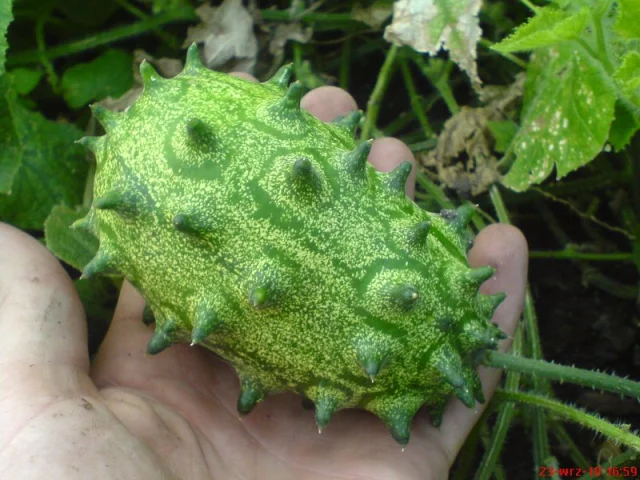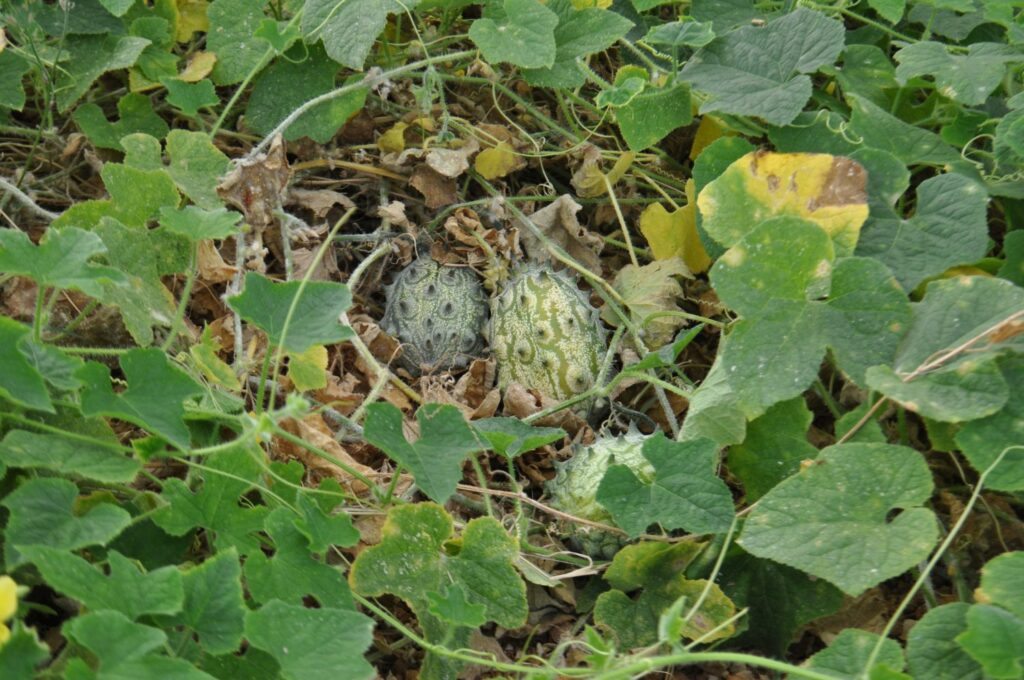That bright, spiky fruit known as African horned cucumber or kiwano (Cucumis metuliferus) may look bizarre, but it’s a resilient, nutritious gem. Originally from southern and central Africa, kiwano is now grown worldwide—in New Zealand, Australia, California, Israel, and Europe. Yet, production remains most prominent in its native regions. So, which country produces the most kiwano? Research suggests that Ethiopia leads globally, with Tanzania and Kenya close behind, while South Africa, Zimbabwe, and Malawi also contribute significant volumes specialtyproduce.com+3husfarm.com+3reddit.com+3.
Origins and Agronomy of Kiwano

Native to southern Africa’s arid zones—South Africa, Namibia, Botswana, Zambia, Malawi, Zimbabwe, Mozambique, and Angola—kiwano served as an emergency water and nutrition source in dry zones like the Kalahari en.wikipedia.org. It’s a hardy vine that can yield over 100 spiky melons per plant specialtyproduce.com+1reddit.com+1.
Africa: The Core of Kiwano Production

Ethiopia – Top Producer
Agricultural data from trading platforms rank Ethiopia as the world’s largest kiwano producer, followed by Tanzania and Kenya husfarm.com. Though Ethiopia’s exact harvest numbers are not widely reported, this ranking underscores its lead across Africa in commercial and subsistence production.
Tanzania & Kenya – Strong Contenders
Ranked just behind Ethiopia, Tanzania and Kenya also report widespread cultivation, primarily on smallholder farms, with growing domestic markets. Local farmers harvest and sell the fruit fresh or use it in salads and ornamentation health.com.
South Africa, Zimbabwe, Malawi, Mozambique, Zambia & Others
These countries also cultivate kiwano for:
- Home or local market consumption
- Traditional uses in salads or as emergency hydration in dry seasons nwdistrict.ifas.ufl.edu+8health.com+8husfarm.com+8specialtyproduce.comreddit.com+4afrifoodnetwork.com+4en.wikipedia.org+4
- Supplements through small-scale commercial initiatives umarp.com
Global Cultivation Beyond Africa

Beyond the continent, kiwano flourishes in:
- New Zealand & Australia: Introduced in the 1930s, grown commercially and often exported under the trade name “Kiwano” nwdistrict.ifas.ufl.edu+15cropj.com+15health.com+15.
- Israel, France, USA (California), and elsewhere: Niche farms produce kiwano for gourmet markets in Western Europe and North America .
- California & Utah: Some private growers cultivate kiwano for local specialty markets, with US supermarkets sometimes offering kiwano at $5 per pound .
Despite this global reach, no country outside Africa matches the sheer volume produced in African nations, particularly Ethiopia.
Why Africa Leads Kiwano Production

1. Native Adaptation
The plant thrives in arid, poor soils and hot climates—conditions found readily across much of sub-Saharan Africa .
2. Multipurpose Use
Kiwano’s orange rind and gel-like pulp make it ideal for hydration, dietary fiber, and antioxidants in local communities .
3. Shelf Life & Trade
The fruit’s durability—lasting up to six months at room temperature—facilitates both local and export trade cropj.com.
4. Economic Growth Potential
As demand grows in Europe and North America, especially for exotic health foods, African nations are beginning to explore kiwano as a cash crop husfarm.com+1health.com+1.
Culinary, Nutritional & Functional Value

Culinary Use
- Eaten raw or used in salads and smoothies, especially with a sprinkle of salt or sugar afrifoodnetwork.com+3reddit.com+3en.wikipedia.org+3.
- Occasionally used as a natural garnish or novelty fruit in high-end cuisine .
Nutrition Highlights
- High in vitamin C, A, lutein, zinc, potassium, magnesium, iron, and dietary fiber .
- Rich in antioxidants like beta-carotene, polyphenols, vitamin E—protecting against inflammation and oxidative stress .
- Low-calorie, hydrating fruit (~89% water content) afrifoodnetwork.com.
Challenges and Opportunities
Major Challenges
- Limited infrastructure restricts large-scale export; many farmers lack access to packaging and cold-chain systems.
- Low market visibility in Western supermarkets leads to niche rather than mass market appeal.
- Physical hazards: the fruit’s spikes can cause minor injuries unless handled cautiously health.com.
Growth Opportunities
- Export potential to Europe/North America as a trendy superfruit.
- Value-added processing: jams, juices, powdered powders, and skincare extracts.
- Sustainable farming: Kiwano is naturally pest-resistant and uses limited water, ideal for dryland agriculture.
- Agrotourism and branding: could be promoted regionally to boost awareness and income.
Final Takeaway
So, which country is the largest African horned cucumber producer? The title goes to Ethiopia, closely followed by Tanzania and Kenya—Africa’s kiwano heartlands. Combined, these nations produce the bulk of global kiwano, thanks to their natural ecosystems, cultural familiarity, and growing commercial interest.
While New Zealand, Australia, the US, and Israel cultivate kiwano for niche markets, none match Africa’s scale and potential. As exotic fruit and health trends rise, these African producers are well‑positioned to elevate kiwano onto the global stage.




